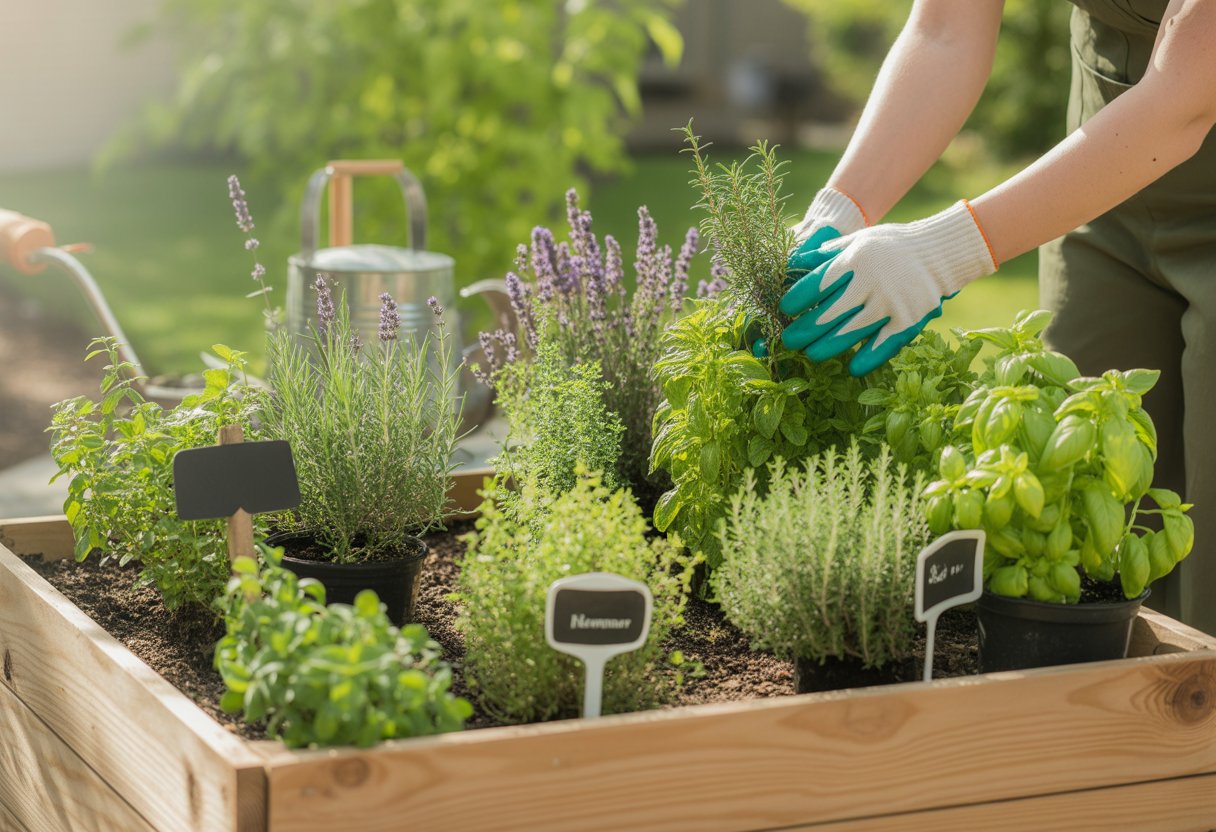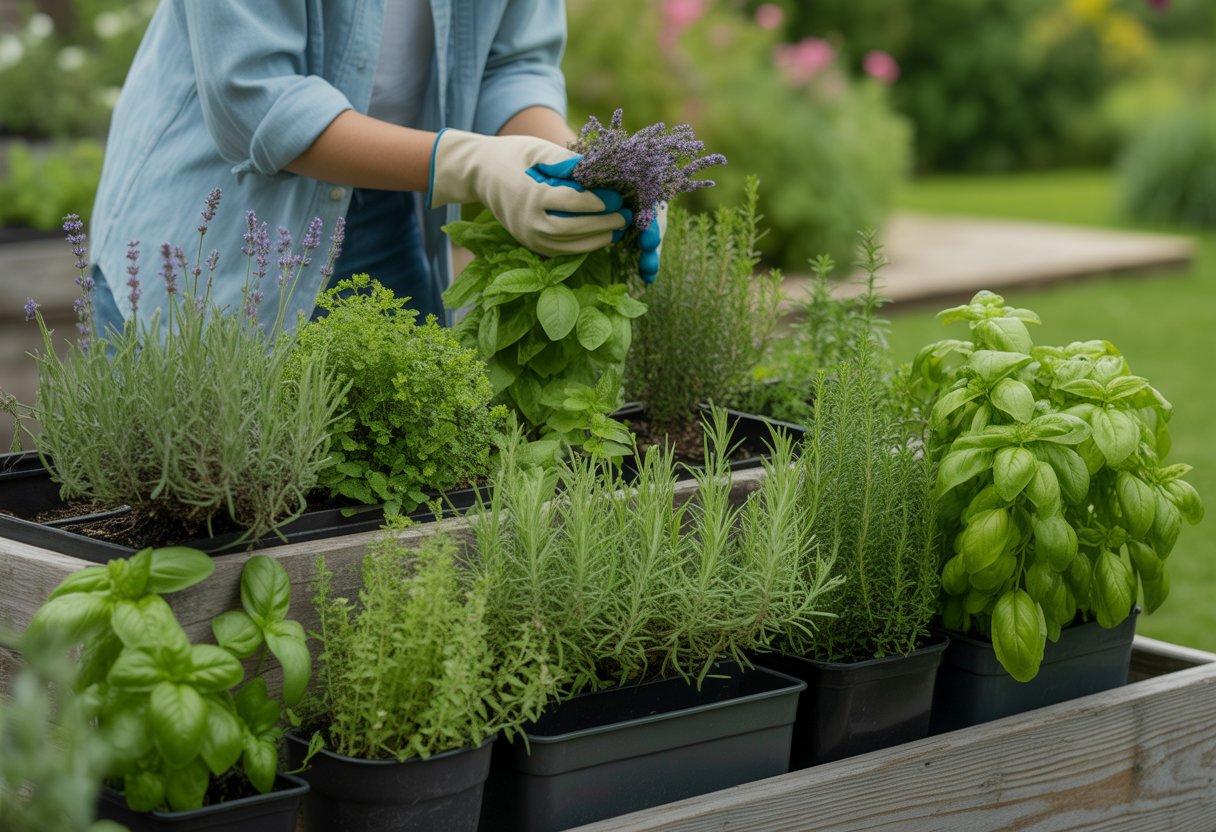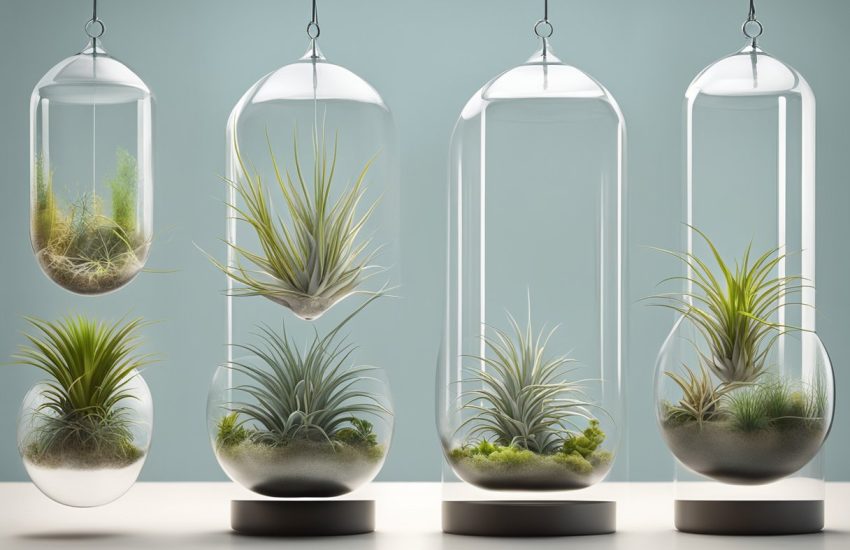Creating a Sensory Herb Garden for Enhanced Aromatic and Tactile Experiences
Building a sensory herb garden blends the perks of a classic herb garden with the immersive qualities of a sensory space. It’s about engaging more than just your eyes—think touch, smell, and even a little taste—by mixing herbs with unique textures, scents, and colors.
You’ll get practical herbs for your kitchen, sure, but there’s also something special about brushing your hands through fragrant leaves or catching a whiff of lavender on a breezy afternoon.

This kind of garden works for almost any space, from a tiny patio to a roomy backyard. Herbs like lavender, rosemary, and mint bring both scent and touch, inviting you to interact and unwind.
Sensory gardens aim to be welcoming for everyone, regardless of age or ability. That’s a big part of their charm.
Focusing on sensory details encourages a slower, more mindful appreciation of nature. Plus, you get useful herbs for cooking and wellness, all while brightening up your outdoor space.
Planning Your Sensory Herb Garden
Getting a sensory herb garden right really comes down to where you put it and how you lay it out. The design shapes how you’ll experience the space.
Choosing the Best Location
Most herbs crave sunlight—ideally 6 to 8 hours a day. Pick a spot with good drainage, fertile soil, and a pH that’s neutral or just a bit alkaline for healthy growth.
Make the garden easy to reach, maybe near a walkway or just outside your door. It’s smart to shield delicate plants from strong winds, so the sensory vibe stays calm.
Leave enough room for your chosen layout and features. You don’t want to feel cramped when you’re out there.
Design Principles for Multisensory Appeal
A sensory herb garden should wake up your nose, eyes, and hands (and sometimes tastebuds). Pairing herbs with different textures and colors makes things interesting—try fuzzy lamb’s ear next to smooth rosemary.
Group aromatic herbs together to boost their scent, especially near benches or paths. Mixing heights with taller and shorter plants creates depth and soft boundaries.
Water features or bumpy surfaces bring in gentle sounds and new textures. Keep plants spaced out, so you can actually get to everything and enjoy each sensory detail.
Selecting Raised Beds, Pathways, and Garden Layout
Raised beds make life easier—they drain well, keep roots in check, and make harvesting a breeze. They also help organize the garden visually and let you control the soil.
Paths should be at least 24 inches wide, so you can stroll comfortably. Materials like gravel, brick, or wood chips feel different underfoot and highlight the planting areas.
A smart layout balances open space with sensory “zones.” Rectangular raised beds and straight paths work, but adding curves brings a little whimsy and guides you through different herb patches.
Selecting Herbs and Complementary Plants
Choosing herbs and companion plants is where the fun really starts. You want a mix that smells good, looks lively, and maybe even brings in pollinators.
Herbs for Scent and Taste
Scented herbs are the stars here. Lavender fills the air with a soothing fragrance, while rosemary brings a sharp, piney note.
Mint is super fragrant but can take over, so plant it in containers. Basil adds a sweet, spicy aroma that works in tons of recipes.
Oregano has a warm, peppery smell and is great for cooking. If you want something milder, try parsley or chives—they’re fresh without being overwhelming.
Colorful and Textured Additions
Bright colors and different textures make the garden pop. Sunflowers and marigolds deliver bold yellows and oranges that stand out against green herbs.
Pansies and violets bring softer, colorful petals. Bee balm adds spiky red or pink blooms with rough leaves for extra texture.
These extras boost visual interest but don’t crowd out your herbs.
Attracting Pollinators and Wildlife
Certain plants pull in bees, butterflies, and birds. Bee balm lures hummingbirds and bees with nectar-rich flowers.
Sweet peas climb and offer nectar, while honeysuckle vines attract more pollinators with their sweet scent.
Sunflowers bring in bees and, later, birds looking for seeds. Mixing these in supports a healthy mini-ecosystem right in your backyard.
Edible Flowers and Vegetables
Toss in some edible flowers and veggies to get more from your garden. Nasturtiums have peppery, bright blooms that look and taste great in salads.
Carrots add feathery greens and a little sweetness. Tomatoes offer color and flavor, and they usually get along well with nearby herbs.
Planting parsley near tomatoes can boost flavor and help keep pests away. It’s all about making the most of your space and senses.
Designing for the Senses

A sensory herb garden isn’t just about what you grow—it’s about how you experience it. The right choices in plants, materials, and little features can wake up your senses in unexpected ways.
Visual Elements: Colors, Shapes, and Patterns
Colors guide your gaze and set the mood. Try mixing purple lavender or yellow chamomile with a sea of green herbs like rosemary and thyme for contrast.
Using black bamboo or dark bark as a backdrop adds some drama. Different shapes—rounded leaves, spiky grasses, tall stems—keep things interesting.
Arranging plants in clusters or repeating patterns gives the space a sense of rhythm. Pebble paths or pale stones can help define areas and show off plant groupings.
Textures for Touch: Foliage and Surfaces
Touch matters more than you’d think. Soft, fuzzy leaves like lamb’s ear feel totally different from the rough branches of rosemary.
Put smooth pebbles next to gritty soil or rough bark for a mix of sensations. It’s oddly satisfying to run your hands over different textures as you wander.
Grasses with fine or wiry leaves change things up underfoot. Even benches made of weathered wood or stone add to the tactile variety.
Scents and Aromatic Experiences
Scents bring the garden to life. Mint, basil, sage, and lavender all have their own personalities, and their aromas shift with the weather and time of day.
Plant aromatic herbs close to paths or seats so you can enjoy them up close. Give the leaves a gentle squeeze to release even more scent.
Mixing scented flowers like rosemary blooms with herbs makes things even more interesting. These fragrances often attract pollinators, too, which is always a win.
Auditory Elements: Chimes and Water Features
Sound softens the space and sets a peaceful tone. Hang wind chimes near tall herbs or bamboo and let the breeze work its magic.
A small fountain or birdbath brings the soothing sound of water and draws in wildlife. These little touches can help drown out city noise and help you relax.
Different materials—metal chimes, stone fountains—create their own unique sounds. Place them where they blend with nature, not overpower it.
Maintaining and Enjoying Your Sensory Herb Garden

Keeping a sensory herb garden thriving takes some regular care, but it’s worth it. Tending to the plants keeps things healthy and gives you more chances to connect with what you’ve grown.
Care and Seasonal Maintenance
Watering and soil health are key. Most herbs hate soggy roots, so stick to well-draining soil and don’t let them sit in puddles.
Trim herbs often to encourage bushy growth and keep the leaves tasty. Deadheading and a fresh layer of mulch help retain moisture and stop weeds from taking over.
In cold climates, bring potted herbs inside or give them some winter protection. Light fertilizing every few weeks during the growing season keeps them happy without overdoing it.
Engaging Activities and Horticultural Therapy
Getting your hands dirty in the garden can do wonders for your mood and focus. Planting seedlings, pruning, or brewing fresh herb tea connects you to the natural world.
The variety of textures and scents supports therapy goals, especially for folks with cognitive or physical challenges. Try making your own scented sachets or experimenting with herb recipes for a hands-on project.
These simple activities build fine motor skills and boost sensory awareness. It’s a space that’s as healing as it is beautiful.
Inviting Wildlife and Observing Nature
When you plant a mix of herbs, you’ll probably notice more bees, butterflies, and other helpful bugs buzzing around. They keep the garden’s ecosystem in check, and honestly, it’s pretty satisfying to watch them do their thing.
If you toss in a shallow water dish or scatter a few small rocks, you’ll give these critters spots to rest or grab a drink. Watching them up close can be surprisingly educational, and it really deepens your appreciation for all the little lives sharing your space.


